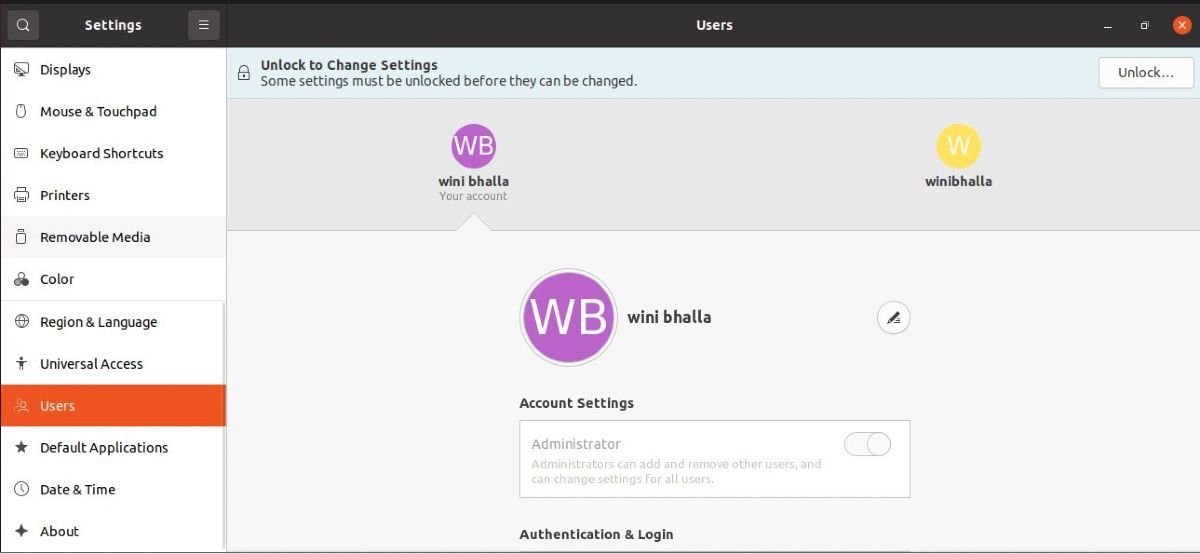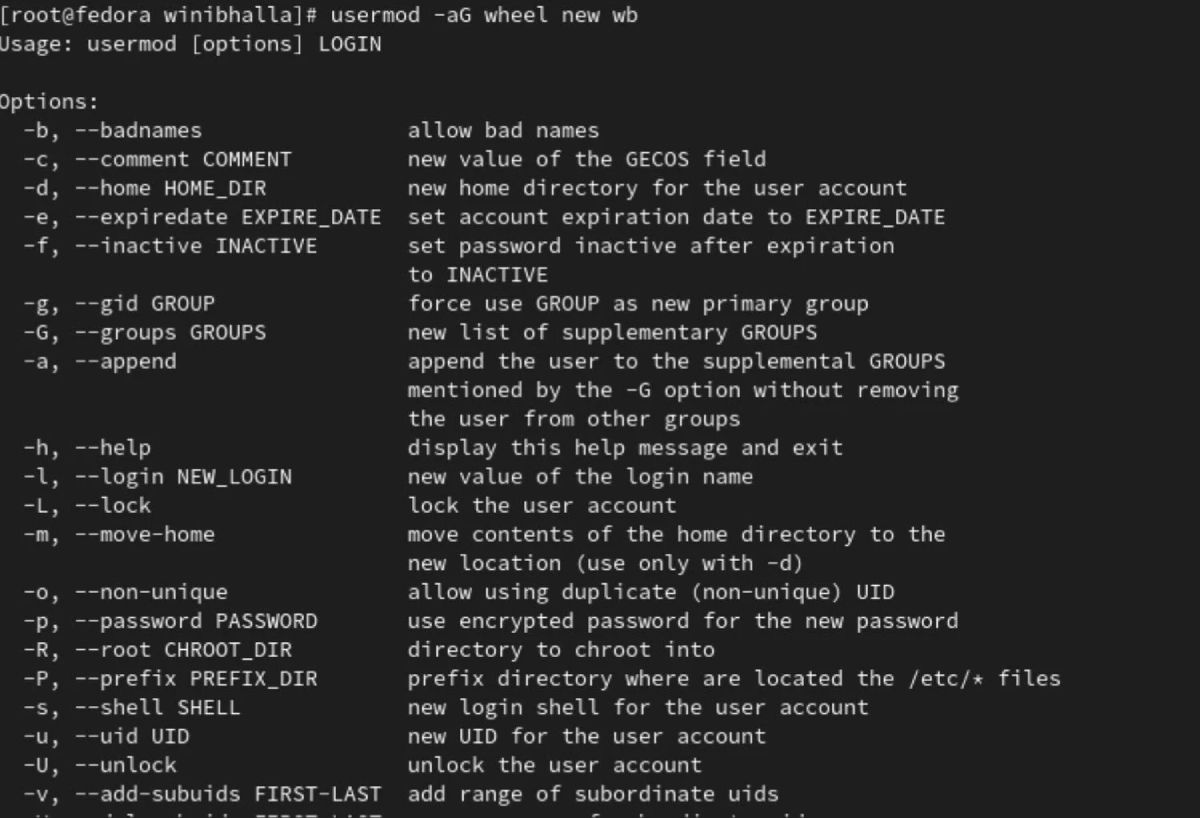to make changes to the sudoers file what command should i use?
On Linux, the sudo command gives you lot the ultimate privilege to perform diverse authoritative functions, despite your non-root access. But to use sudo, yous need to accept a superuser account on your system.
Since there are several Linux operating systems, more normally known as distros, in that location are multiple ways to add together a sudo user. Read on to find more about how you tin can use Linux commands inside dissimilar distros to achieve this simple, notwithstanding essential task.
Adding a Superuser on Ubuntu and Debian
Within Ubuntu and other Debian-based distros, in that location are two prominent ways of adding a sudo user. You can either practise it through the final or take the graphical approach, using Arrangement Settings.
one. The Command-Line Approach
To add a sudo user via the command line, you have to launch the terminal beginning. Then, type the following command:
sudo adduser username ...where username is the name of the new user that you want to create.
This control will create a new user that you can add together to the sudoers grouping. Yet once again, there are multiple ways to add a user to the sudo grouping. The kickoff way is using the usermod command.
sudo usermod -aG sudo username ...where -a refers to the Append office and G stands for Grouping.
One time y'all've added the user to the sudo grouping, you demand to cheque if the aforementioned command worked properly. To verify, blazon the following:
groups username In instance you are a power user, who prefers to avert multiple commands, yous tin can directly create a new superuser using a single control:
sudo adduser username sudo The verification process remains the same as earlier.
ii. Using the Graphical Interface
Before adding the user to the sudo group using System Settings, you'll have to create a new user first through the command line. Then, follow the steps given below to go on:
- Go to the Applications menu and click on the Users option. You will see a listing of users including the newly created user(south).

- Click on the Unlock option, followed by the root password. You can switch to another user account by simply clicking it.
-1.jpg)
- As presently equally you select it, you volition see an option to convert the newly created user account into an administrator business relationship. Toggle the push next to the Administrator label, and the account will get added as a sudo account.
Creating a New Superuser on Arch Linux
On Curvation Linux, since the organisation doesn't create a sudo account past default, the user has to create 1 manually. The commencement pace is to get root access using the su control.
su Enter the countersign for the root user followed by the beneath command:
pacman -Sy sudo Equally shortly as sudo is installed, create a new user.
useradd --create-home username Set a countersign for the new user using the passwd control.
passwd username Now, it is time to add the newly created user proper noun to the sudoers listing. Apply the usermod command to accomplish this.
usermod --append --groups wheel username You can check the sudoers file using the following command:
visudo In one case the /etc/sudoers file opens, you lot need to edit some user privilege specifications, located at the bottom of the sudoers file. Locate the post-obit line in the text file:
#%wheel ALL=(ALL) ALL Output:
Remove the # symbol preceding the %wheel line and save the changes. Press Ctrl + O on the keyboard to salve the file.
To check if the user has been added successfully, y'all need to execute the following command:
su username The bash prompt volition modify to reverberate the name of the new user. To verify, type:
whoami Information technology should display the name of the current user. To cheque if the new user has sudo privileges, type:
sudo whoami If the output displays root, and so the electric current user has administrative access.
Calculation a sudo Account in CentOS
Considering CentOS'south popularity, it would be a shame to miss out on the procedure of adding a sudo business relationship in this distro. The procedure for adding a sudo account in CentOS is quite like to the process specified above for Arch Linux, merely with a few bones changes.
Before you lot create a new user, you accept to log in every bit root. To practice so, utilize the su command:
su After logging in as the root user, it is fourth dimension to create a new user, which we will then add together to the sudoers list.
useradd -Yard cycle username Fix the countersign for this new user, using the passwd command.
passwd username Now, log in as the new user, to cheque if you accept sudo access. To do so, enter the following commands one by one:
su username
sudo whoami Output:
.jpg)
Equally shortly every bit you lot hit enter afterwards typing the starting time command, the system will prompt you for the password. Enter the new password to continue. The output of the in a higher place command will display root, which ways that the current user has root privileges.
How to Add a Superuser in Fedora
Concluding simply not the least, in case you are using Fedora every bit your chief OS, you can assign superuser privileges to a new user in a few piece of cake steps.
To create a new user, use the adduser command as follows:
adduser username Now, set a password for the new user.
passwd username Add this newly created user to the bike group using the usermod command.
usermod -aG wheel username 
Open the sudoers file using the following command:
visudo Now, you demand to edit some user privilege specifications. Locate the post-obit line in the text file and uncomment the %wheel ALL=(ALL) line by removing the Pound character (#) preceding it.
## Uncomment to allow members of group bicycle to execute any command
%cycle ALL=(ALL) ALL .jpg)
Granting Superuser Privileges to New Users
Depending on which distro you are using, the process of creating new sudo users is going to be the same more or less, with a few slight differences. The idea is to make certain you are able to grant root permissions to whatever new administrators who will be using the distro.
Not many Linux users know about this, but sudo and su are ii dissimilar commands. Although both of them perform similar functions, they are very different from i another in many aspects.
About The Author
teegardensone1962.blogspot.com
Source: https://www.makeuseof.com/how-to-add-create-new-superuser-linux/

ارسال یک نظر for "to make changes to the sudoers file what command should i use?"